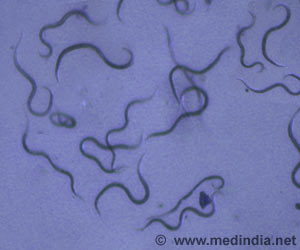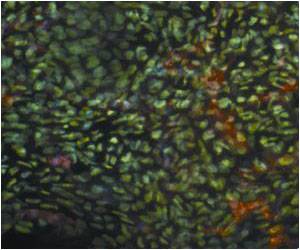
ACS, the world's largest scientific society, is holding the meeting here through Thursday. It features nearly 12,000 presentations on a wide range of science topics.
Joan Brennecke, Ph.D., will deliver "The Fred Kavli Innovations in Chemistry Lecture." She investigates and develops new substances called ionic liquids that are widely considered greener alternatives for a broad range of processes that currently use toxic solvents.
"The thing that makes ionic liquids special is that they don't evaporate," Brennecke says. "That means they won't cause air pollution, and they're essentially not flammable."
One of the major global problems that ionic liquids could solve is how to capture the greenhouse gas, CO2, from power plants. And in an unanticipated development, Brennecke hit upon an exciting option around the same time President Obama announced his initiative to reduce emissions of the gas from power plants by 30 percent.
"It was total serendipity," she says.
Advertisement
That substance was solid at room temperature. But when CO2 was added, the substance grabbed onto the gas molecules and condensed into a liquid, effectively removing the CO2 from the air flow without adding heat. Brennecke explained that this process could dramatically reduce the energy required to capture CO2. The new substance from Brennecke's lab can potentially do the same job using less than a quarter of a plant's energy production, compared to current methods, which eat up nearly a third of the output.
Advertisement
Khademhosseini is at the Harvard-Massachusetts Institute of Technology Division of Health Sciences and Technology, Brigham and Women's Hospital and Harvard Medical School, as well as the Wyss Institute for Biologically Inspired Engineering.
His research involves the development of micro- and nanoscale technologies to control cellular behavior and systems for tissue engineering and regenerative medicine. He is also developing innovative medical materials, including surgical sealants and injectable gels that could stop internal bleeding in a noninvasive way. For these applications, he uses protein-based hydrogels.
"For example, these materials could be used in lung surgery," Khademhosseini explains. "If there's a tumor, the surgeon cuts it out and can suture the site. But sutures don't completely close the incision, so air and liquid can leak. To avoid these leaks, you need to put in some kind of sealant."
The trick is making the sealant tough but stretchy. Khademhosseini's team has developed a gel material that meets these criteria. And because it's made out of a human protein, the gel shouldn't raise the immune system's alarms. The researchers are currently testing the sealant in animals.
Source-Eurekalert










